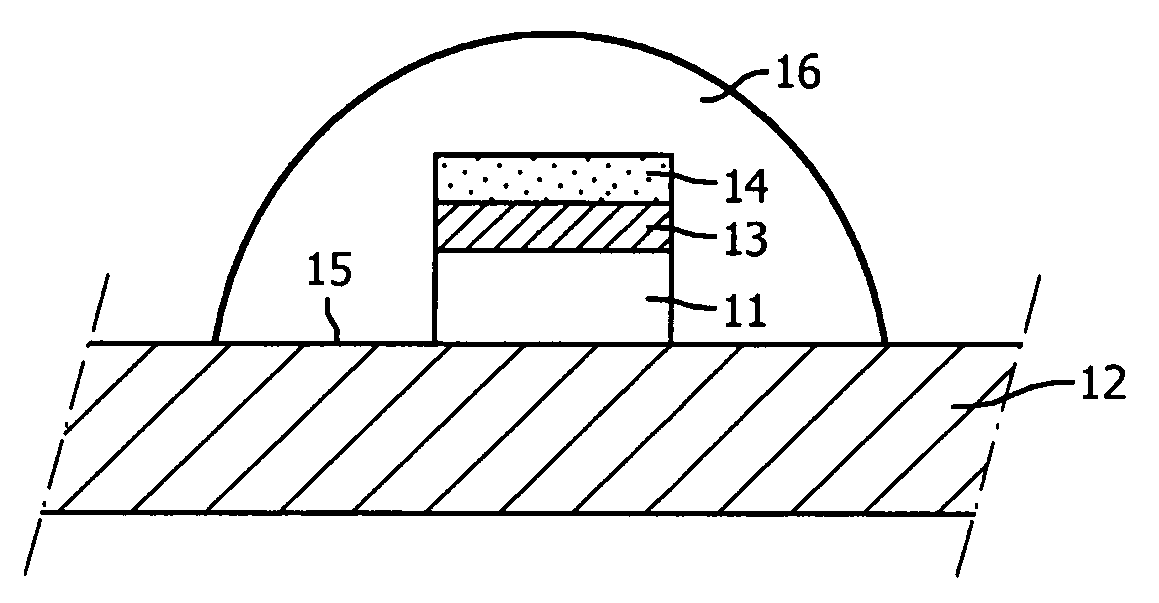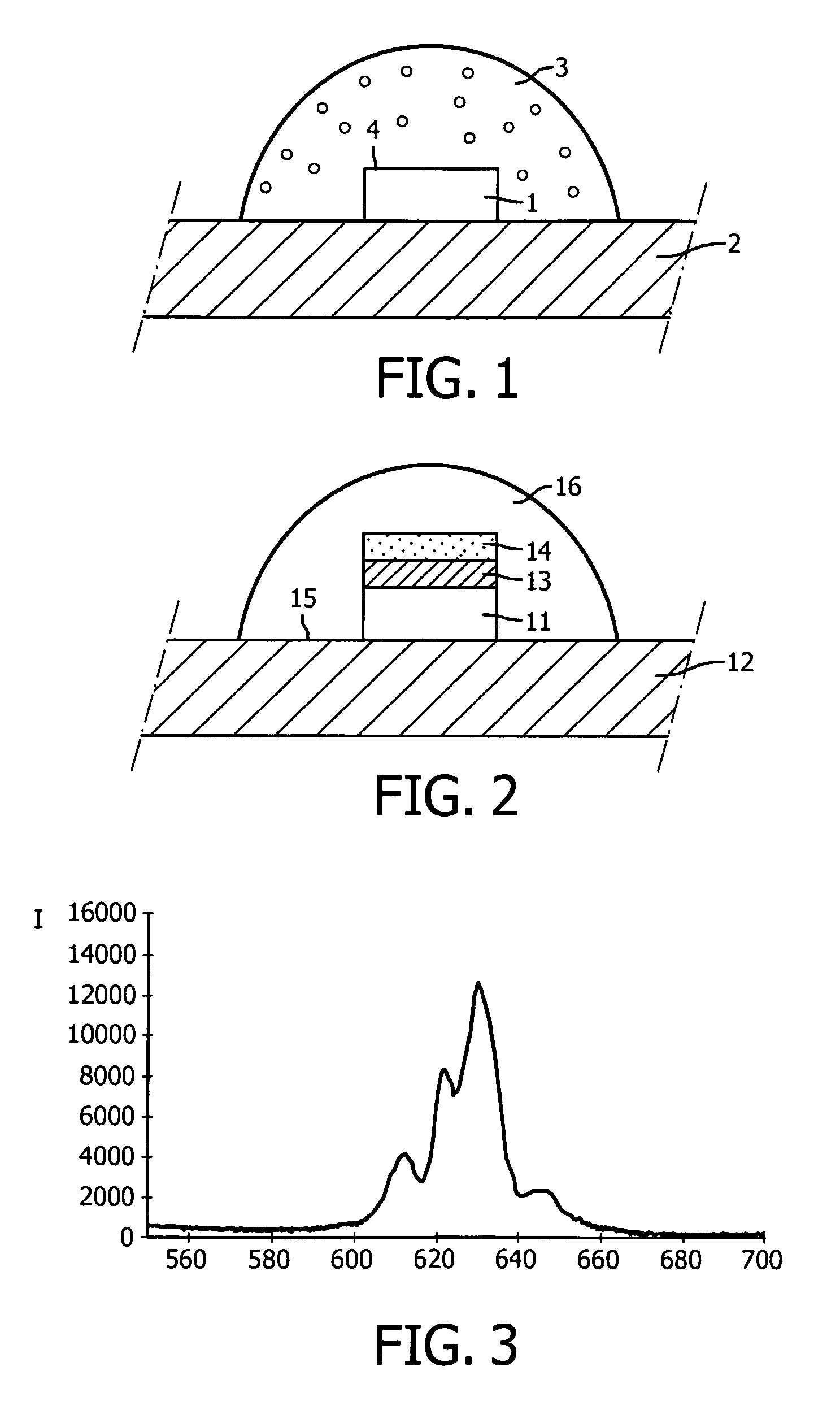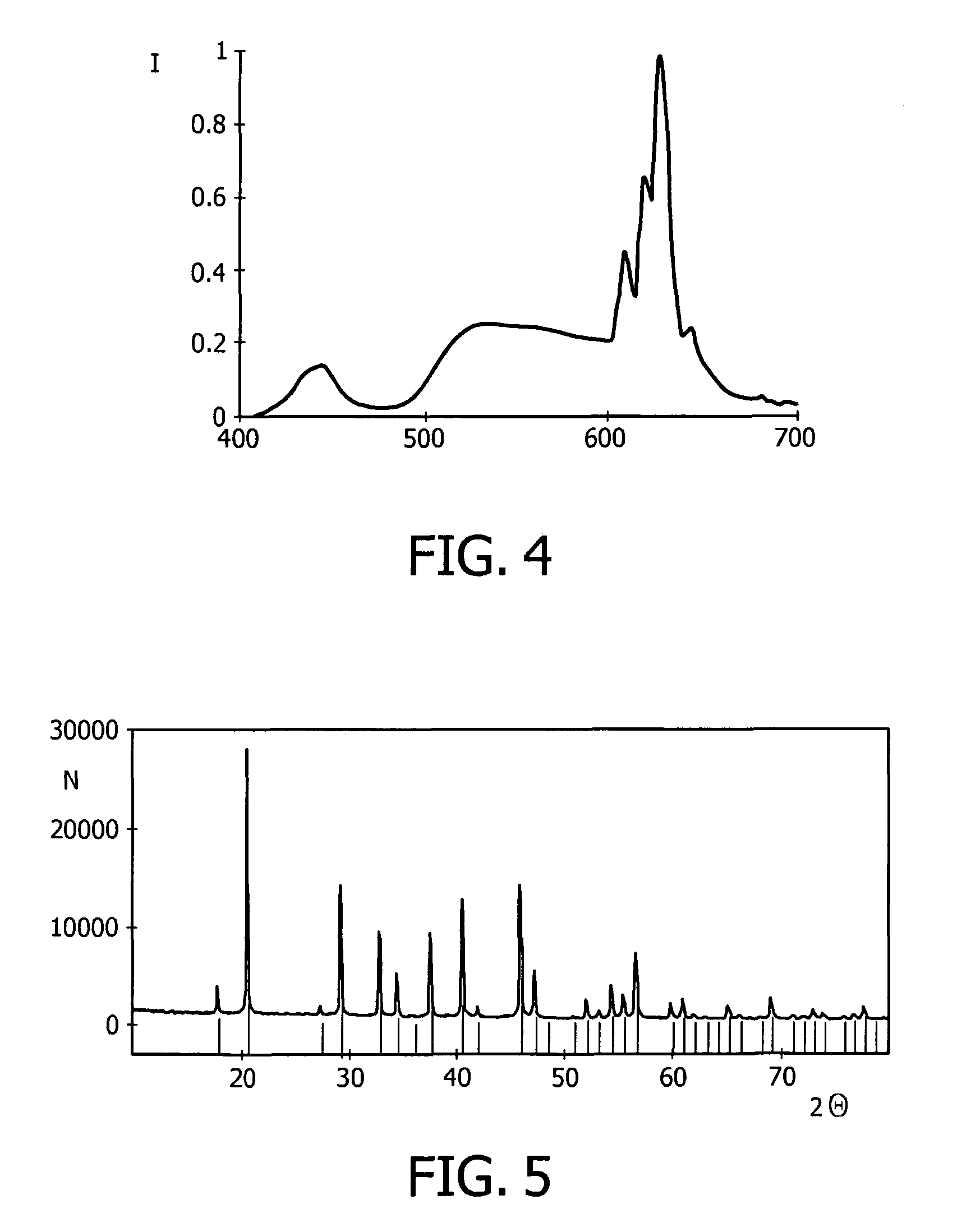Light emitting diode device with luminescent material
a technology of light-emitting diodes and luminescent materials, which is applied in the direction of basic electric elements, chemistry apparatuses and processes, and light-emitting compositions. it can solve the problems of difficult practice, inconvenient handling of fluoride compounds, and insufficient light-emitting capacity, so as to improve the desired light-emitting performance, increase stability, and enhance the effect of light-emitting performan
- Summary
- Abstract
- Description
- Claims
- Application Information
AI Technical Summary
Benefits of technology
Problems solved by technology
Method used
Image
Examples
first embodiment
[0040]the present invention is schematically illustrated by FIG. 1. This Figure shows a cross-section of a LED device comprising a semiconductor light emitting diode (1), which is connected to a substrate (2), sometimes referred to as sub-mount. The diode (1) and substrate (2) are connected by means of appropriate connecting means, like solder or (metal-filled) adhesive.
[0041]The diode (1) is of the GaInN type, emitting during operation light having a wavelength of 450 nm. In the present embodiment, said light exits LED (1) via emitting surface (4). A wavelength converting element (3) formed as a convex lens shaped body is positioned adjacent to LED (1). This lens is largely made of a high temperature resistant silicone resin, in which grains are incorporated of a Mn4+-activated fluoride compound having a garnet-type crystal structure. Latter compound acts as a luminescent material in the lens. In the present embodiment said silicone resin contains 16 vol % {Na3}[Al1.94Mn0.03Mg0.03]...
second embodiment
[0044]FIG. 2 depicts a schematic cross-section of the present invention designed as a white light generating LED device. This Figure shows a conventional blue or (near)UV generating light emitting diode (11), which is attached to a substrate (12) using solder bumps (not shown). Substrate (12) has metal contact pads on its surface to which LED (11) is electrically connected (not shown). By means of these solder pads, LED (11) can be connected to a power supply. In the present example, LED (11) is of the AlInGaN type and emits blue light having a peak wavelength of appr. 420-470 nm. It goes without saying that other semiconductor materials having other peak wavelengths can be used as well within the scope of the present invention.
[0045]Two wavelength converting elements formed as ceramic platelets (13) and (14) are positioned adjacent to LED (11). The platelets (13, 14) and LED (11) can mutually be affixed by means of an adhesive (like a high temperature resistant silicone material or...
PUM
| Property | Measurement | Unit |
|---|---|---|
| color temperature | aaaaa | aaaaa |
| wavelength | aaaaa | aaaaa |
| refractive index | aaaaa | aaaaa |
Abstract
Description
Claims
Application Information
 Login to View More
Login to View More - R&D
- Intellectual Property
- Life Sciences
- Materials
- Tech Scout
- Unparalleled Data Quality
- Higher Quality Content
- 60% Fewer Hallucinations
Browse by: Latest US Patents, China's latest patents, Technical Efficacy Thesaurus, Application Domain, Technology Topic, Popular Technical Reports.
© 2025 PatSnap. All rights reserved.Legal|Privacy policy|Modern Slavery Act Transparency Statement|Sitemap|About US| Contact US: help@patsnap.com



